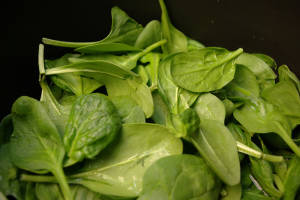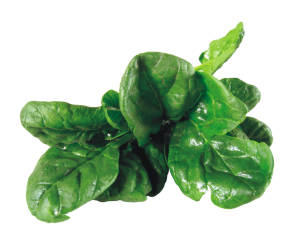Spinach is a rich source of iron, folic acid and anti-oxidants. Though it is unlikely to have the same effect as when Popeye eats it, there’s no doubting that it’s good for you. Supplementing dishes with spinach is easily done, as it can be added to salads, used in cooked dishes (especially with ricotta) or eaten raw, traditionally as part of a hot breakfast.
Spinach is a cool season vegetable that needs short days. It will go to seed with long, warm days. It also tends to prefer shade.
Varieties of Spinach
Historically there have been two main groups of spinach: the prickly-seeded varieties and smooth-seeded varieties. More recently spinach has been cultivated to have the best of both varieties, so exclusive groupings are difficult. Modern Spinach is frequently classified as being Savoy, Flat Leaf or the hybrid Semi-Savoy. Savoy varieties have crinkly leaves and Flat Leaf varieties have flat and wide leaves.
How To Plant Spinach
Spinach can be planted whenever the ground is able to be worked with. Most varieties can tolerate frosts in small or infrequent doses. Check the seed packs for more information.
Spinach likes soil that is deep, rich and moisture retentive. Ideally the soil should be loosened to the depth of one foot (30cm). It may be a good idea to dig in rotted organic matter before planting if the soil is sandy. Spinach loves nitrogen, so use a moderate sprinkling of a fertilizer high in nitrogen before planting. pH should be between 6.5 and 7.5, so lime soil if necessary.
So seeds a half inch deep (1.5cm), an inch (2.5cm) apart in rows a foot (30cm) apart. As the plants grow, thin to a final spacing of 8 inches or so (20cm). Seeds can be sown successively for continual cropping.
Growing Spinach
Spinach tastes best if it is grown quickly. Continue to provide a fertilizer high in nitrogen every two weeks. Use a mulch to maintain soil moisture, which spinach loves.
Water regularly and weed, being careful not to disturb the roots.
Growing spinach in containers is easy. You will need one with about a foot of depth (30cm). Keep in a cool, slightly shaded position and water regularly.
Harvesting Spinach
Spinach takes around 6 weeks to mature. Spinach leaves can be harvested gradually, starting at the outer of the plant. Always leaves some leaves on so that the plant continues to produce. Leaves are best used fresh.
Threats to Spinach
Pests love the leafy nutrients in spinach. Slugs and caterpillars are the biggest offenders. Control chemically, remove manually or use snail traps.


